October 29, 2025
Topic
Year of Abundance
By: Bernadette Austin
Earlier this month, Governor Gavin Newsom christened 2025 as the Year of Abundance. Indeed, state agency leaders and advocates have spent much of the year exploring how to apply the lessons from the nonfiction novel Abundance by Ezra Klein and Derek Thompson released in March. The novel examines the reasons behind the lack of progress on domestic goals in areas like affordable housing and climate change. These lessons were echoed intentionally and adjacently at a number of gatherings I participated during this fall conference season. In 2026, CivicWell will continue to advance this important conversation, including at our 34th Annual Policymakers Conference in Yosemite and our new Policy Bridge conference in February.
CivicWell’s Fall Webinar series included some valuable insights on this topic, including our sessions on the circular economy and CEQA reform. National Stewardship Council (NSAC) CEO Heidi Sanborn provided examples of critical regulations from this legislative cycle that protect health and safety, but also shared that the circular economy presents real economic opportunities to eliminate or even monetize industrial by-products. Experts from Ascent joined a city executive in providing case studies and guidance on anticipated impacts for local governments and practitioners, including housing development, climate action planning, and other project types. You can view the webinar records and informative slide decks here.
At California Forward’s annual California Economic Summit, there were plenaries on both abundance and scarcity. One important discussion was around how deregulation can be used to advance economic prosperity while acknowledging concerns about how deregulation could leave behind values around environmental sustainability and social equity without intentional actions.
At the American Planning Association’s California Chapter Conference, two sessions covering nearly three hours explored a huge number of changes to the state’s planning profession aimed at speeding up housing production and other priority land use applications, including the implementation of sweeping new CEQA reform legislation. As we look towards a potential Housing Bond in 2026, local leaders must think about how to leverage policies and resources to promote housing development while planning for sustainable communities this housing is located in.
At the Central Valley Strategies: Local Pathways to Housing Progress, (a joint event of the Center for California Real Estate and the California Association of Realtors), I participated in a panel that also explored this intersection of housing, climate, and equity. We discussed ideas on how Central Valley communities can leverage planned investment in substantial infrastructure projects like High Speed Rail and water purveyance and flood control to promote affordable housing development in both economically and environmentally sustainable ways.
Fundamentally, we must approach these challenges in a comprehensive way. Addressing the state’s housing affordability crisis also requires solutions that increase availability of high-quality jobs. Addressing our climate disaster challenges requires nuanced conversations about where and how housing and commercial development take place. Implementing ambitious state policies to promote abundance statewide requires not only the sort of resources being made available by the 2024 Climate Bond and School Bond—as well as the potential 2026 Housing Bond. It also requires meaningful and bidirectional dialogue between state and local leaders that addresses real barriers to implementation.
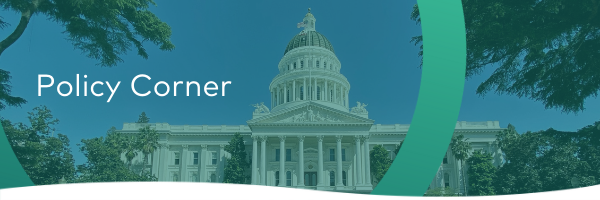
California’s Crossroads: Balancing Climate Ambition with Economic Reality
Provided by Steve Hansen, Managing Partner Lighthouse Public Affairs, Sacramento / Former Chair and Boardmember, CivicWell.
California has long led the nation in bold climate policy and sustainability goals—from decarbonizing the grid to transforming transportation and expanding climate-resilient infrastructure. But as we approach 2026, the state stands at a critical crossroads. The ambitions of the last decade are now colliding with economic headwinds, mounting affordability concerns, and practical challenges that threaten to erode both public support and long-term momentum.
Over the past four years, Californians have weathered a series of compounding pressures: persistent inflation, the expiration of significant federal climate incentives, and escalating threats from wildfires, floods, and extreme heat. At the same time, many well-intentioned green investments—whether in clean energy, transit, or housing—face steep regulatory hurdles and permitting delays that drive up costs and stall delivery. The result is a widening gap between aspirational policies and the lived experience of residents coping with high utility bills, housing insecurity, and strained public services.
Too often, climate ambition and affordability are treated as opposing forces. They are not. California’s future depends on our ability to better align the two—making the state more livable and affordable while staying committed to climate action. Livability means more than lowering costs; it means building homes, water systems, energy projects, and transportation networks that allow people to stay and thrive here.
The historic CEQA reforms passed by the Legislature this session were criticized by some detractors as a rollback of environmental protections, even though their most significant impact was to streamline projects near mass transit and support urban infill. Opposition to these reforms often relied on arguments that al one side and affordability on the other.
This tension raises a crucial question: Are we at risk of a sustainability “tragedy of the commons”? If climate policies are perceived as unaffordable or ineffective, we risk losing the civic and political will to act—regardless of how urgent the threats remain.
To avoid that outcome, California must recalibrate. That begins with a renewed focus on outcomes people can see and feel. We must deliver projects faster and more efficiently. That means modernizing regulatory frameworks, setting clear timelines, ensuring predictable processes, and reducing barriers that undercut both environmental and equity goals. We have tools at our disposal. The climate bond approved by voters in 2024, for example, could dovetail with the planned 2026 state housing bond to support livable, climate-resilient communities. This is just one example of the dynamic policy thinking needed in the next phase of California’s leadership.
Local governments are ready to lead—demonstrating how pragmatic, community-centered approaches can deliver real, visible results. However, the Governor and Legislature must take these local successes to scale. In the coming session, this means coupling ambitious goals with the funding, tools, and regulatory clarity that local leaders need to deliver.
Californians embrace the opportunity to show that climate leadership and economic resilience are not competing priorities, but two sides of the same coin. With smart investment, policy clarity, and a renewed commitment to partnership, state leaders can demonstrate that sustainable progress isn’t just possible—it’s essential.

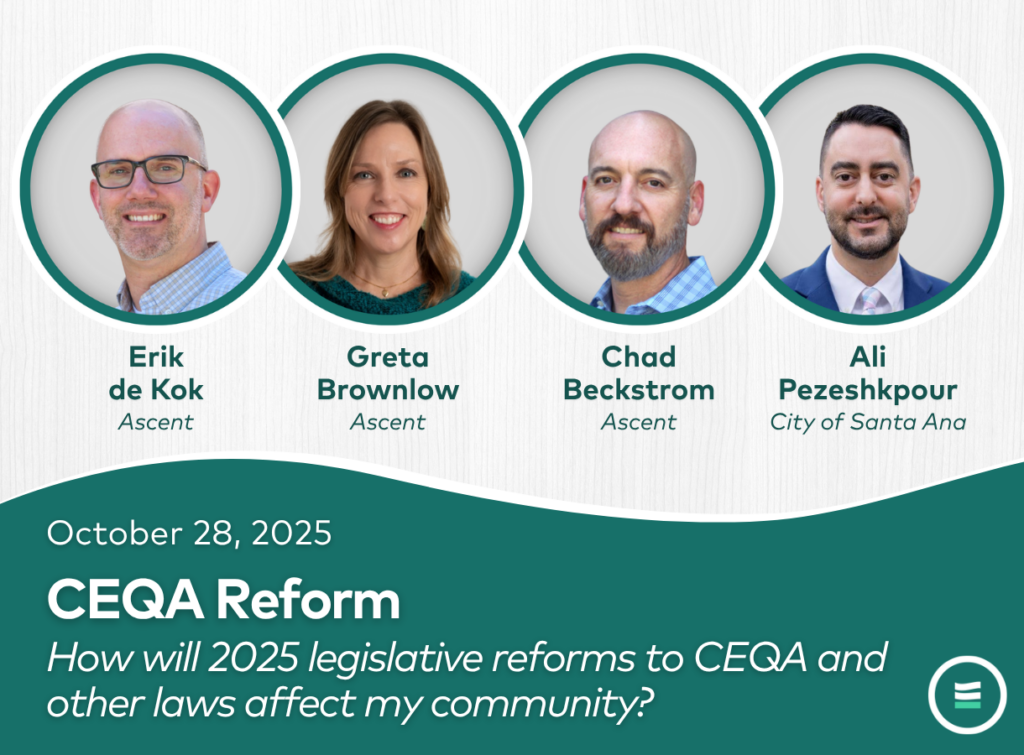
Technical Difficulties During the
CEQA Reform Webinar
For those of you who tried to attend the “CEQA Reform: How will 2025 legislative reforms to CEQA and other laws affect my community?”, and were unable to get in, we sincerely apologize. We were working furiously behind the scenes to try to fix the issue, but unfortunately, we could not find a remedy to the situation. You can access the recording of the webinar on our YouTube page (where you can also find recordings of our previous webinars), or on the webinar webpage by clicking here. A copy of the slides used in the presentation is available on the webpage as well. We hope you will check it out!
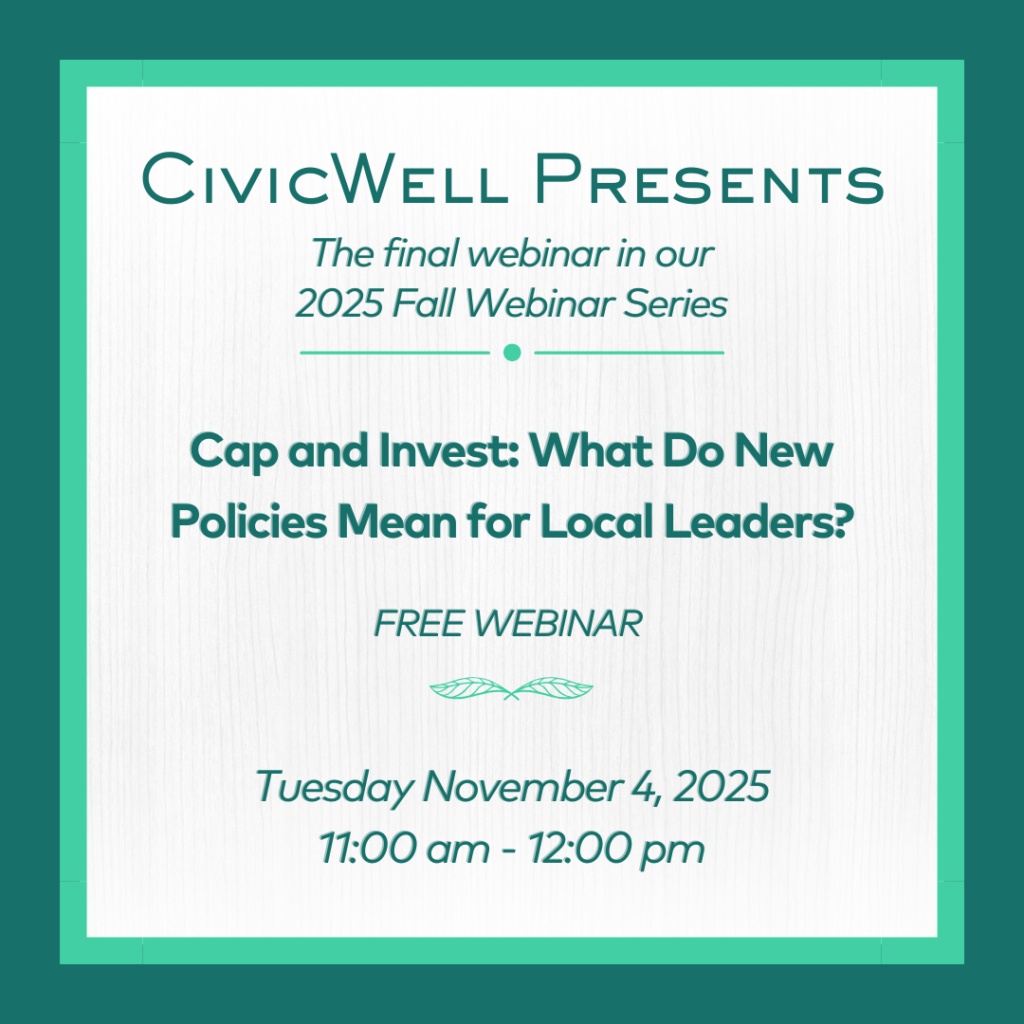
Cap & Trade Reauthorization and the Future of the
Greenhouse Gas Reduction Fund
The final webinar in the series will take place on Tuesday, November 4th and it will be on the topic of Cap & Trade Reauthorization and the Future of the Greenhouse Gas Reduction Fund. This webinar will provide an overview of the future of the Cap and Invest Program, featuring a panel of individuals deeply involved in negotiating and implementing these policies. We hope you can make it!
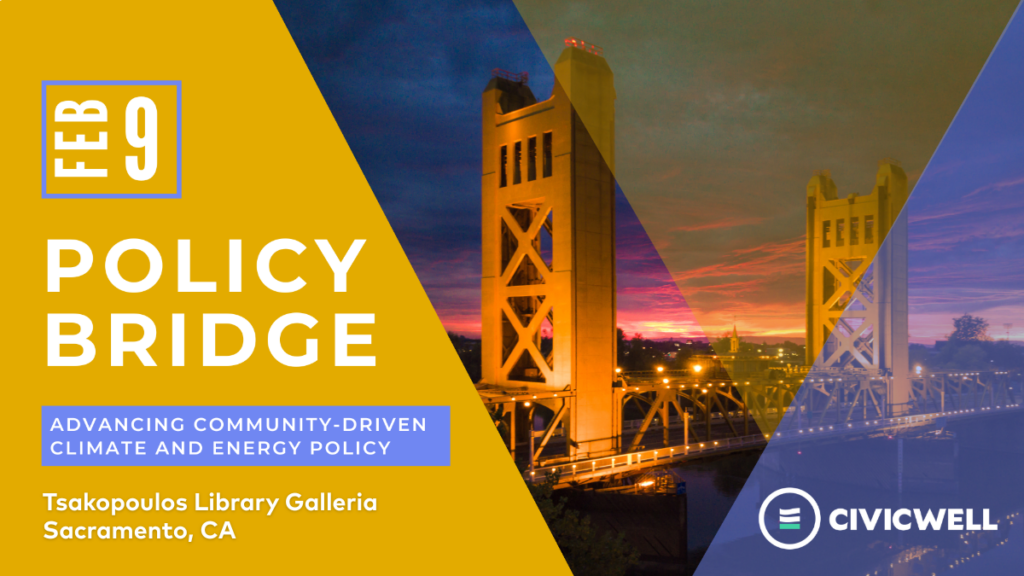
We Would Like to Announce our New Policy Bridge Event!
With rapid changes and funding instability at the federal level, California’s leadership has never been more critical. Coordination among local, regional, and statewide leaders is urgently needed to ensure the sustainability of our state’s pioneering climate investments and the advancement of community-driven energy, climate, and land-use policies.
The inaugural Policy Bridge daylong event will serve as an incubator for creative policy solutions targeted to community needs and place-based priorities. This event will be invitation-only.
More information coming soon!
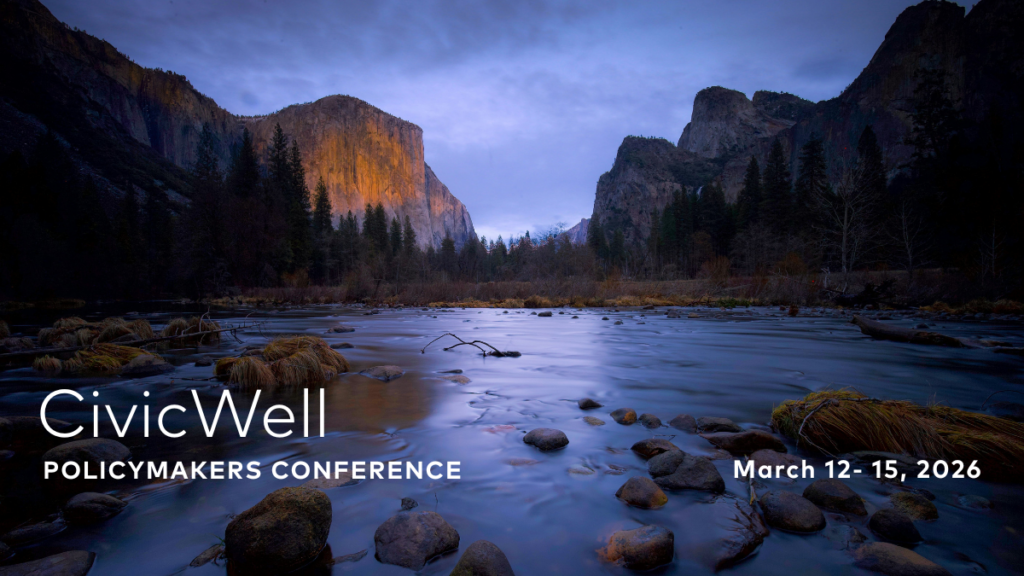
Registration for the Policymakers Conference
Will be Opening Soon!
From Recovery to Resilience
At the 34th Annual CivicWell Policymakers Conference, we’ll explore innovative solutions in communities emerging from converging challenges—wildfire recovery, housing crises, energy affordability, economic uncertainty, and more. This year’s program will highlight equitable climate investments, neighborhood-scale transformations, and the economic strategies to build climate resilience, social cohesion, and economic prosperity in California communities.





